Midway Garden
1639 University Ave.
St. Paul
This page covers all the fun and hijinks to be had at 1639 University Ave. (one block west of Snelling) in St. Paul.
I would very much like to thank Erik Likes, manager at Ax-Man Surplus, which inhabits the building today, for giving me a tour back in 2019. He had a stash of postcards and other materials about Midway Gardens that staff had either found or that people had sent them, that he allowed me to photograph. I was so grateful for his interest in the history of his building, and his willingness to take the time to share it with me. In return, I bought a pair of cheap sunglasses!
1933
MIDWAY AMUSEMENT CLUB/MIDWAY GARDEN(S)
It is unclear when the Midway Garden nightclub took shape. (The name seems to have morphed from Garden to Gardens, and its original name was the Midway Garden Gay 90’s Stage Bar.) I’ll present evidence in chronological order to demonstrate the confusion.
This venue started in about 1933 as the Midway Amusement Club, apparently built by the Midway Amusement Co. In September 1933, the Minneapolis newspapers began reporting on bowling scores from the team bowling from the eight lanes in the basement. The location was just given as “Midway Amusement Club, St. Paul.”
An undated ad for the Midway Amusement Co., 1633-9 University Ave., only advertises the bowling alley: “Bowl Three Times a Day and Keep the Doctor Away.” It does give the critical bit of information that the manager was Clarence J. Walraff. On Saturday, February 18, 1933, Walraff was elected to the Board of Directors of the International Bowling Association. Despite their name, all officers came from Minnesota or Wisconsin. (Minneapolis Tribune, February 19, 1933)
Below are a couple of early matchbook from the place. They say only Midway Amusement Co., “operating the only air conditioned recreation center in the Twin Cities.” The back calls it “Midway’s Fun Factory, Featuring Bowling and Billiard Rooms, restaurant and night club, cigar counter and bar.” Neither of them have yet dubbed the night club the Midway Gardens.
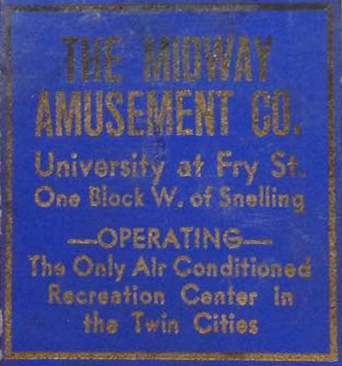
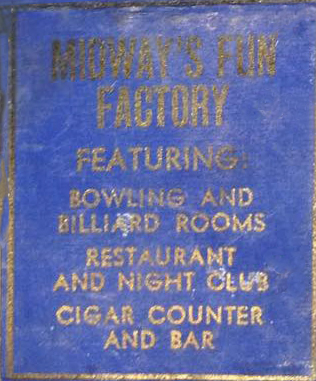
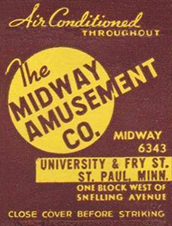
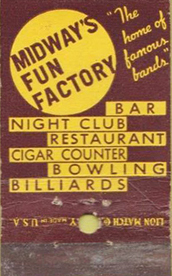
Both matchbooks are from the collection of Mark Youngblood.
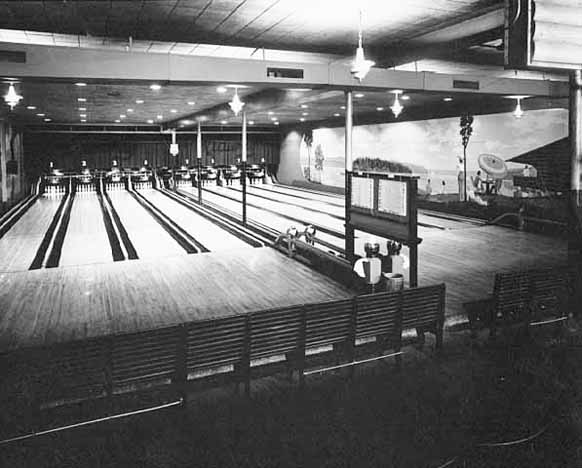
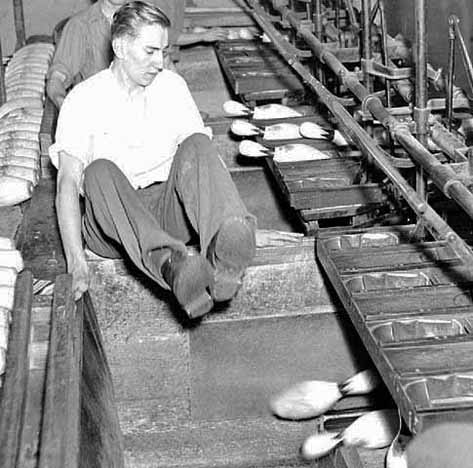
Decades later, Ax-Man still had this list of the best pinsetters:
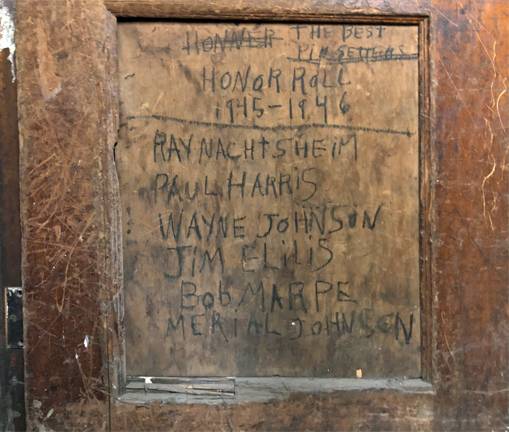
There were 13 billiard and snooker tables.
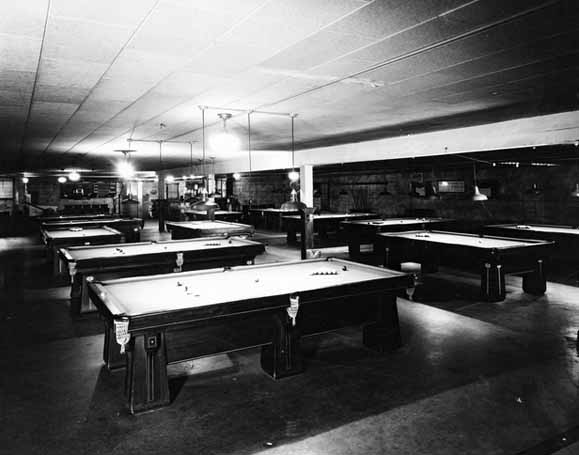
This bar says Midway Amusement. MHS dates the photo 1940, but the bar was up and running by November 1934 at least. Whether it was upstairs with the restaurant, downstairs with the bowling alley, or adjacent (the address was 1633 University), it was certainly associated with the Midway Garden.
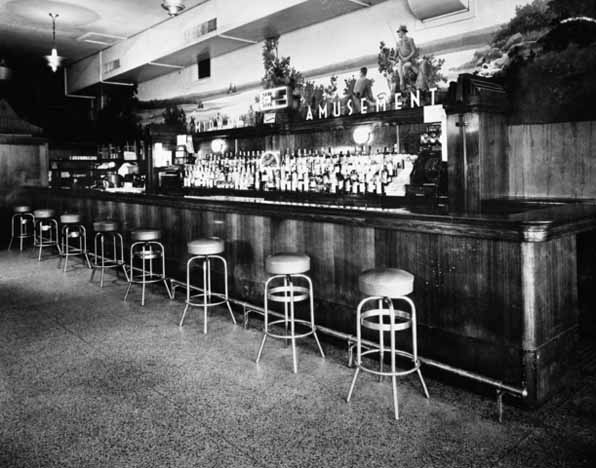
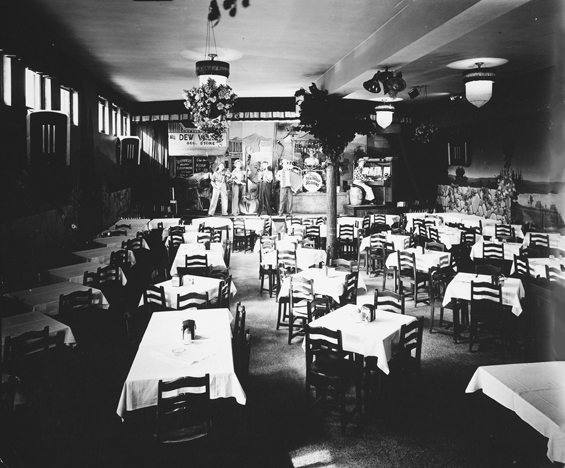
The undated image below from a matchbook doesn’t really help – or does it? On the left there is a bar with tables, and on the right is just a bar. So it looks like they were in the same room.
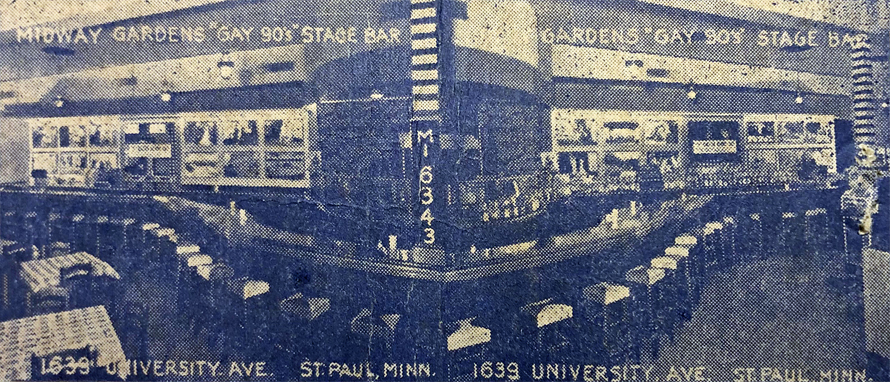
1937
Cedric Adams first mentioned Midway Garden in his column in 1937, noting that a blind traveling orchestra called the Arions were performing at the club for the month of April . (Minneapolis Star, April 1, 1937)
FREDDIE FISHER
Freddie Fisher and the Schnickelfritz novelty band, “The World’s Most Unsophisticated Band,” was close behind, again reported by Adams at Midway Garden (July 7, 1937). The band got attention in Billboard and Variety.
In September 1937, Rudy Vallee was in town and caught the group’s performance. He was so impressed that he ran up on stage and offered the band a part in his next movie. By November 1, 1937, they were off to Hollywood. On June 1, 1938, Warner Brothers’ “Gold Diggers in Paris.” premiered in New York City, featuring the Schnickelfritz Band.
Freddie started his comedy band in Winona (at the Sugar Loaf Tavern, reported Adams) in 1935 and was well-known in the Twin Cities in the ’30s and ’40s. In the late ’40s he moved to Aspen, where he died at age 62 in 1967. (Minneapolis Tribune, March 29, 1967)
This might not be too readable, but it’s the ultimate primer on what the band’s all about. Sounds like a precursor to Spike Jones?

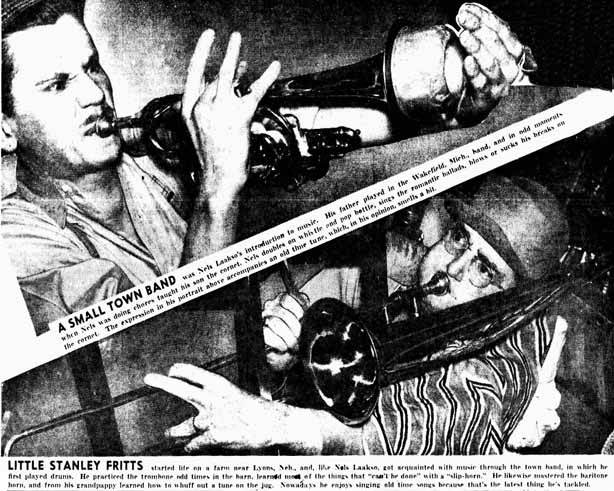
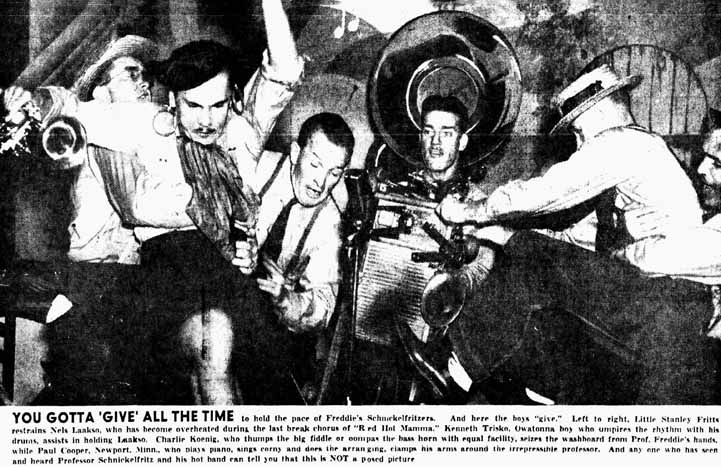
In the Star’s September 17, 1937, issue, most of a page was dedicated to the partying of the upper class at the Midway Gardens before they went off to their Ivy League schools out east. Prep and Finishing schools were reported, as well as comings out. They ate fried chicken. With their hands.
In October 1937, there was reference to the Midway Amusement Co., a place to pick up tickets to other shows.
On Sunday evening, November 14, 1937, the Midway Amusement Club Orchestra was broadcast over WTCN radio.
1938
The next orchestra was called the Rodeoliers. An ad placed in March 1938 urged people to get acquainted with Mrs. O’Leary, the club’s nationally famous musical cow.
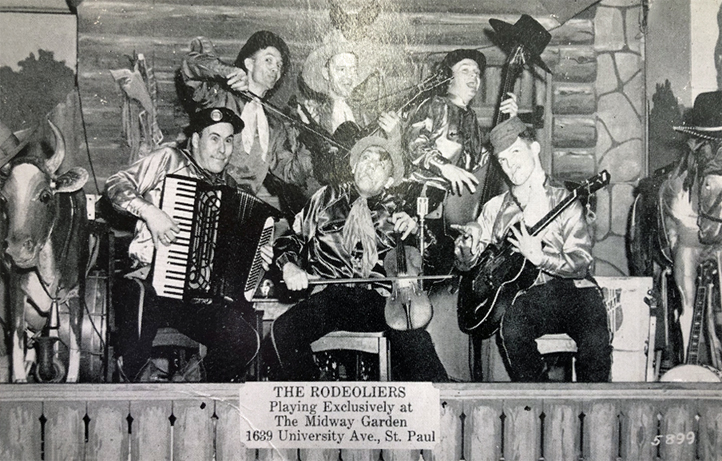
The Rodeoliers apparently went on to New York, and in August 1938 the new band was Darrell Fischer and the Minnesota Lumberjacks.
But what do we make of this? One of those Seasons Greetings ads reads, “Midway Amusement Co. Announces the Midway Garden (Night Club)”
1940
DEW VALLEY ACORNS
Goofy bands were the rage, and New Years Eve 1939 offered up the “Dizziest and Daffiest band that ever hit the Twin Cities,” in Fiddle Bow Bill and His Dew-Valley Acorns.
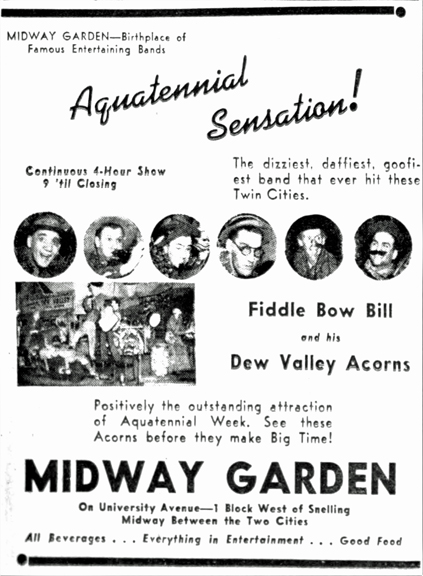
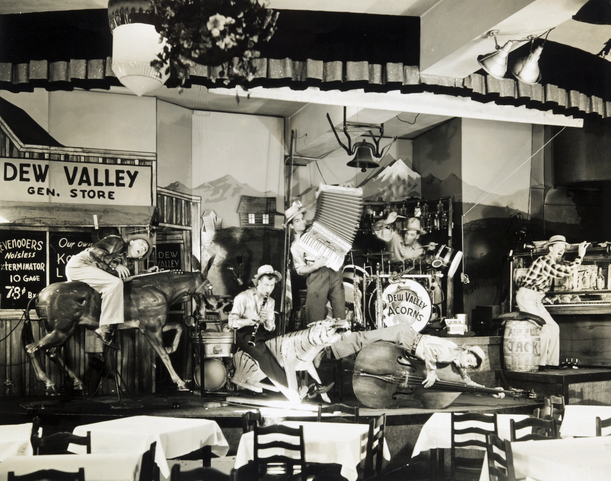
On November 10, 1940, an ad celebrated the group’s 355th performance at the Midway Garden.
1941
In November 1941, something new was added – a melodrama that incorporated old songs that everyone knew.
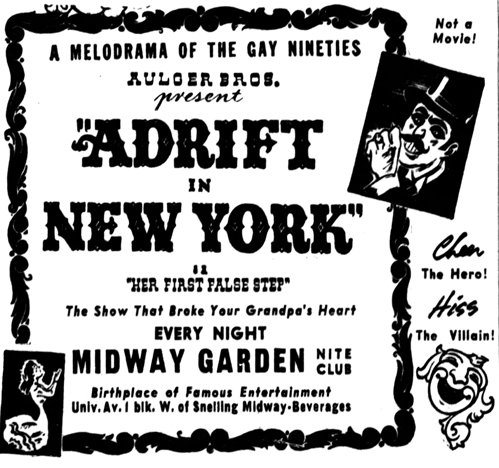
But come December 1941 the corn returned in the form of Jerry Harstad and his Korn Huskers.
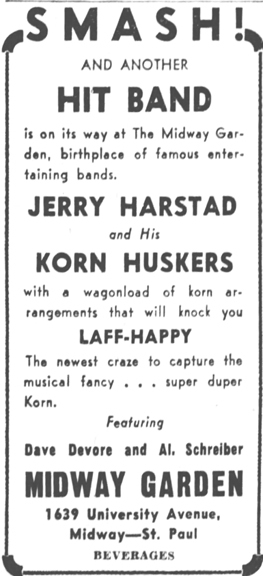
1942-1945
The presence of uniforms makes me think these photos were taken during World War II:
The photo below is from Jim Bloomfield. “Pictured on the right are my parents, Arlene Olsen and Joel Bloomfield. On the left is my dad’s brother, John Bloomfield and his soon-to-be-spouse Virginia Banning.”
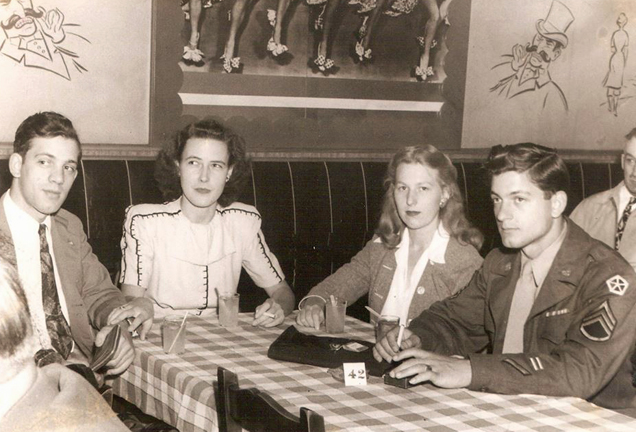
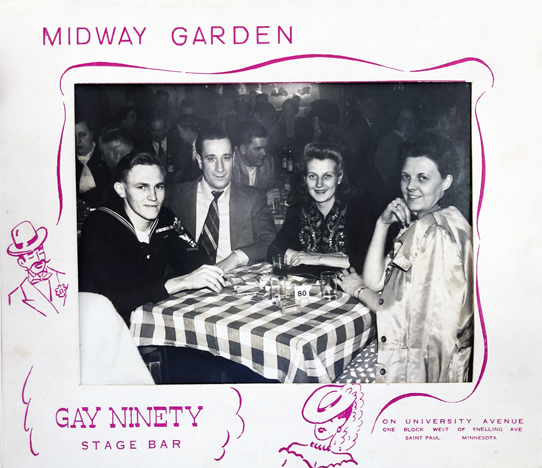
1945
Things slowed down during the War, but a big ad in May 1945 announced that the hilarity was back in business.
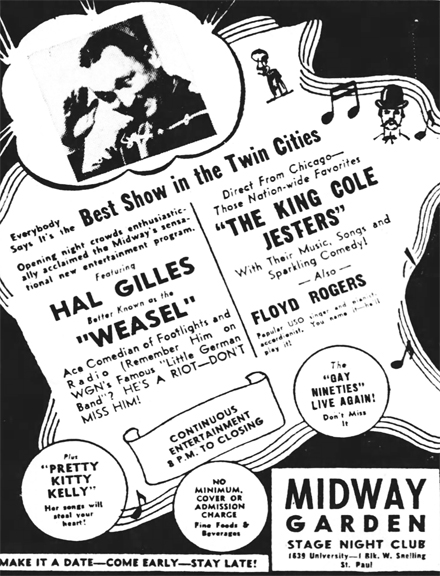
The Dew Valley Acorns were back in 1945.
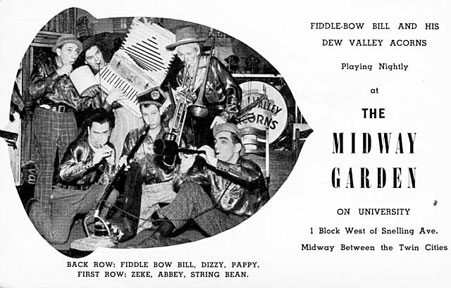
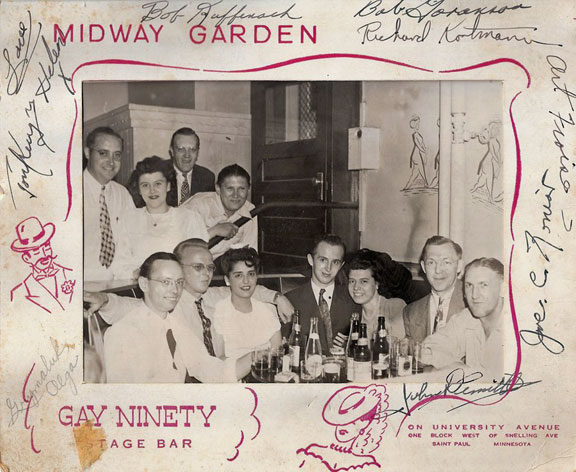
1948
In December 1948, you could spend your New Year’s Eve with the Korn Kribbers, yet another hokum comedy band. They had been at the club in February 1946 as well.
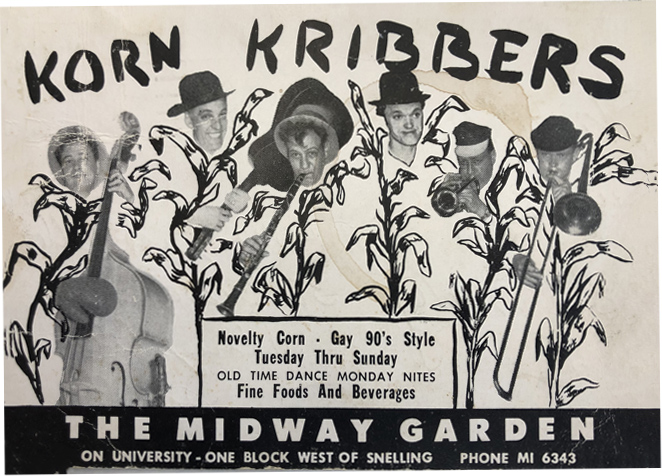
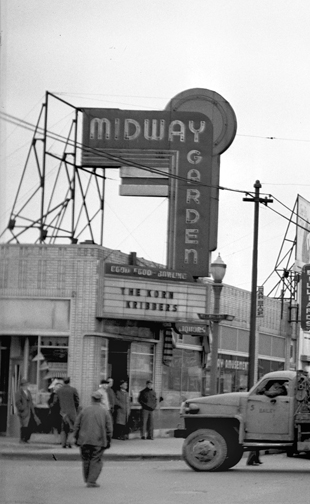
1949
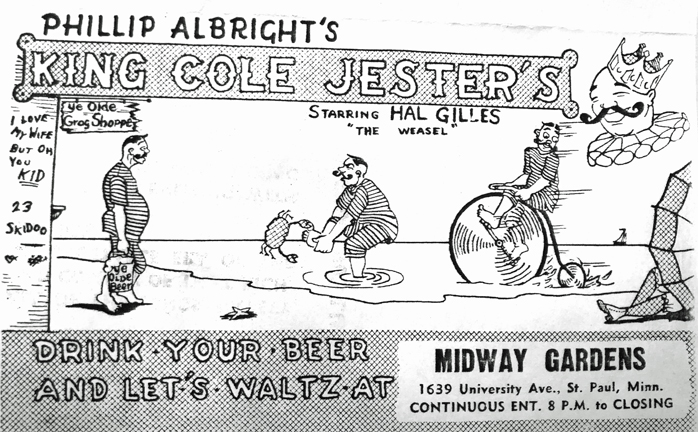
1951 – 1952
In July 1951, the Midway Garden may have gone Country/Western, which is not at all like Cornball, in the early 1950s. Ardis Wells would go on to rule the front bar at the Flame Cafe once it took the plunge and went Country in 1956.
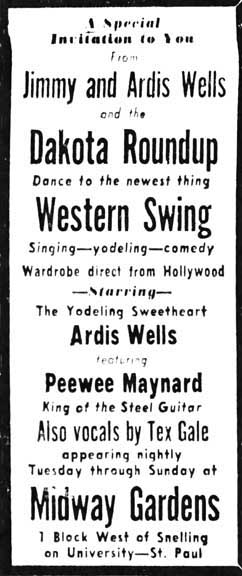
1960
END OF THE GARDENS
A notice was posted on May 1, 1960, that the Midway Garden was “Quitting Business” and that there would be an auction on May 3. For sale were restaurant and bar fixtures, and an 8 lane bowling alley. Auctioneer David H. Levine began using the building to auction off other lots, with ads running until July 21, 1960.
1961
FAMILY PLAYLAND
On January 17, 1961, the Star announced that Family Playland, a family recreation center, had opened in the building.
1965
MERCHANDISE CLOSEOUTS
In September 1965, General Products Corp. offered closeouts of all sorts of merchandise in wantads entitled “ATT. WAGON JOBBERS.”
1966
AX-MAN
Finally, the first ad for Ax-Man Surplus appeared, again in the wantads. The ad was for Melmac dinnerwear, sold cheap.
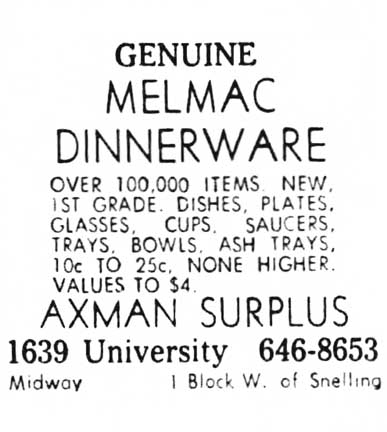
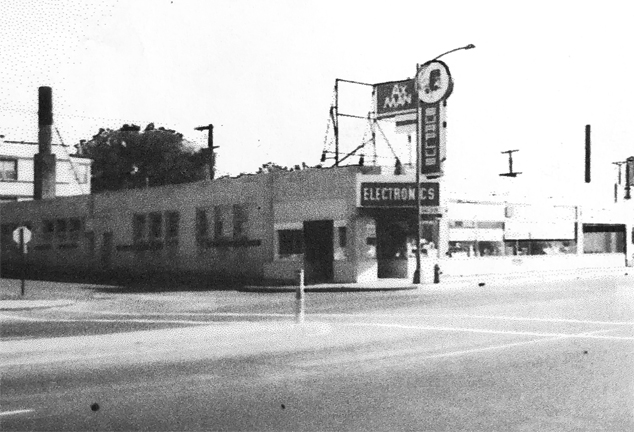
As of 2019, Ax-Man was still in the building, and respectful of its history as the former home of Midway Garden!
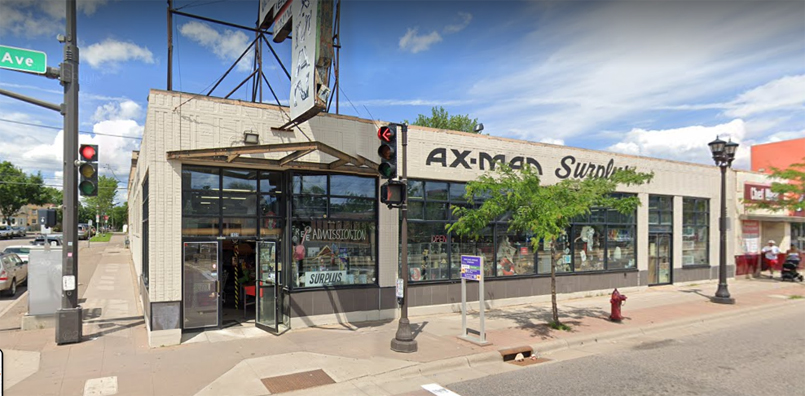
And Ax-Man is still using the Midway Gardens sign:
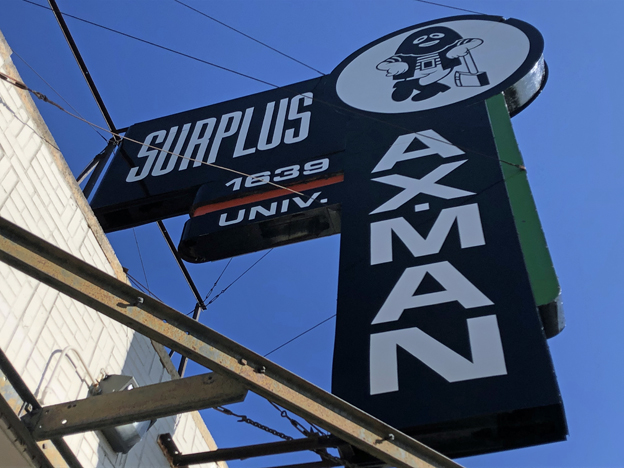
WHAT’S LEFT?
Believe it or not, when I was given my tour of the place in 2019, there were still vestiges of Midway Gardens. Behind a dumpster was some long-ago foliage from the long-ago garden where the people in their finery danced to orchestras or laughed at the cornball but talented musicians who came from the farm.
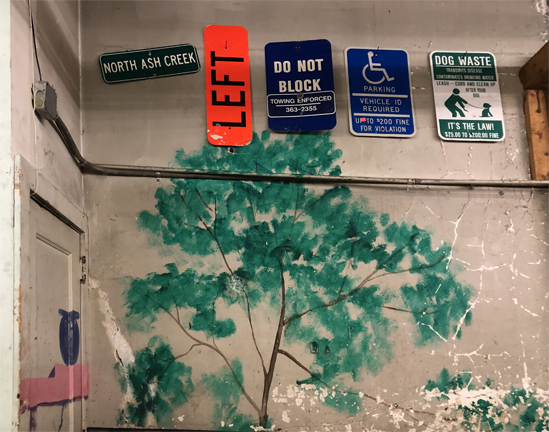
To the left is a very narrow doorway to the basement, where the men bowled and played snooker and smoked fat cigars and solved the problems of the world and competed with teams from Hamm’s and Coca Cola and Schmitt’s. There was no light and it was too dangerous to go down, unfortunately. But my imagination went down to the bowling alley, where I interviewed the ghosts of those champion pinsetters. Brave men, all.


